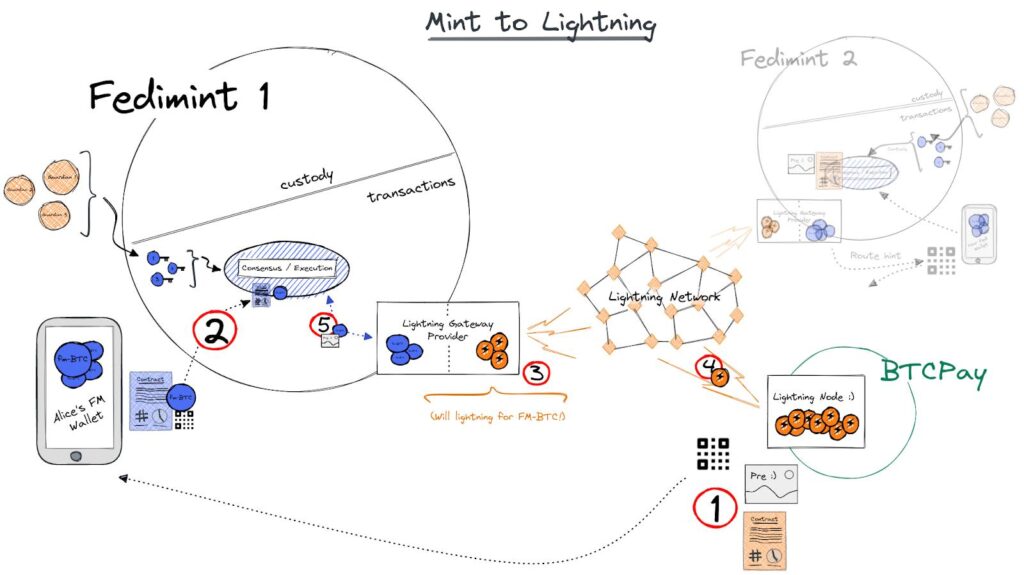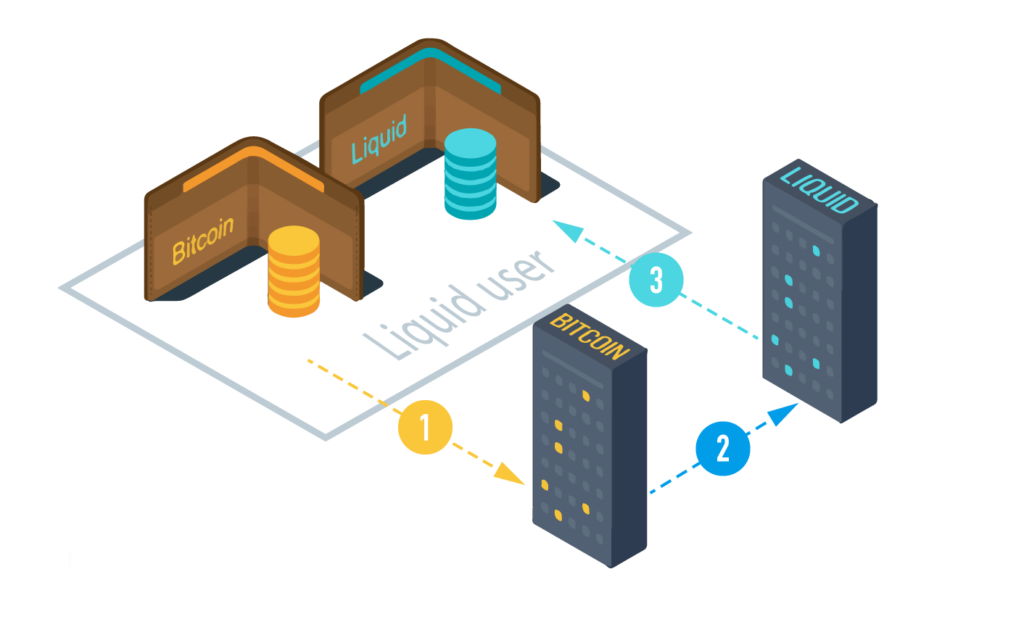
Changed incentives
As Bitcoin continues its upward trajectory in value, there is an urgent need for effective Bitcoin scaling solutions. These solutions are becoming increasingly critical as the network faces heightened traffic from the growing popularity of Ordinals, Inscriptions, and BRC-20 tokens. BRC-20 tokens, in particular, are causing significant spikes in network fees as their transactions demand top priority for confirmation.
Bitcoin has recently experienced a surge in value, stirring excitement and speculation among investors and enthusiasts. This may be fueled by the buzz surrounding the potential approval of Bitcoin Exchange-Traded Funds (ETFs) and/or the much-anticipated halving event.
Simultaneously, the Bitcoin Network is experiencing a surge in traffic due to the increased popularity of Ordinals, Inscriptions and BRC-20 tokens. BRC-20 tokens in particular, are spiking network fees, as the transactions minting inscribed tokens need to be confirmed with top priority.
In Bitcoin, as network traffic increases, so does the cost of making transactions. And bitcoin fees are currently through the roof hitting transaction fees unseen since the last spike in 2021.
For more background on this, we recommend checking out our writeup: The Evolution of Bitcoin: From Block Wars to the Great Ordinal Debate
As interest grows, the conversation inevitably turns to a crucial aspect of Bitcoin’s future: scaling.
However, it’s one thing to discuss future scaling solutions, and another thing to discuss what businesses can implement right now to navigate high fee environments.
We’re going to cover it all in this deep dive:
- Current challenges of scaling Bitcoin
- State of the art tech that can be implemented right now
- Future scaling solutions
But first, a little background on scaling.
The challenges of scaling Bitcoin

As an estimate, let’s say the Bitcoin on-chain network gets us about 500,000 daily user transactions. The Lightning Network is the mostly widely implemented and accepted solution to scaling beyond this limitation.
Lightning is designed to scale the Bitcoin blockchain with payment channels that can be used for many payments and only occasionally settle on-chain for channel openings and closings. However, a crucial feature here is that real bitcoin is always being traded on the Lightning Network. There are no tokens, it’s all real bitcoin that is available at all times to be settled on the Bitcoin blockchain.
In order to use Lightning in a non-custodial fashion – meaning the user has their own secret keys – at least one channel needs to be set up with each user.
Let’s say the Lightning Network, as a non-custodial platform, will allow us to scale up to millions of daily users. It’s a pretty reasonable number. One could see a future where the majority of Bitcoin on-chain transactions are only Lightning channel openings and closings.
However, there is no way that the Bitcoin Network will support global adoption with non-custodial Lightning users at the current block size. There aren’t enough spaces in bitcoin blocks to support anywhere near one channel per human on the earth. Not even close. The original Lightning White Paper notes this in the conclusion.
So let’s say Lightning is the solution that is going to get us to millions of daily Bitcoin users, what comes next?
What is the tech, or the combination of tech and block size increases, that gets us to billions of daily Bitcoin users?
This may sound a long way away, but people are thinking and working on potential solutions right now.
What is also happening right now is a major headache for businesses that work with non-custodial Bitcoin and Lightning.
Let’s describe some of that headache and then get into the solutions.
The difficulty with non-custodial micropayment apps
So far this has been quite theoretical. So let’s get down to the nuts and bolts. Velas, as a business that works and invoices in bitcoin, makes at least a few weekly on-chain transactions.
Last week, the cost per transaction based on our experience, varied between $ 9.62 and $ 34.14 USD per transaction. These weren’t complicated transactions, we could use this as an estimate for the cost of opening or closing a Lightning channel last week. Taproot channels can help here, but they are currently still in the experimental phase.
This creates a serious headache for businesses that need to open and manage Lightning channels.
For example, we are working on a non-custodial Lightning rewards app that uses a combination of LDK and LND to make non-custodial user nodes, send rewards and drive user engagement. In fact, these types of micropayments are the secret sauce in some of the most popular Bitcoin and Lightning applications to date.
But how can we manage that economically when the cost of opening a channel to each user node is so expensive?
If non-custodial micropayments are hurting, it’s also affecting businesses that specialize in more “traditional” sized non-custodial payments, like the popular Lightning Service Providers, or LSPs.
A non-custodial Bitcoin Lightning wallet needs to be able to open a channel to their users. And there is great tech like zero conf channels and channel splicing to improve economy, but ultimately, these costs will be passed on to Bitcoin users and could seriously slow adoption.
The state of the art in Bitcoin scaling solutions
Custodial and hybrid solutions
So what are the solutions? Bitcoin and Lightning have a user base that is growing, with new spending power, and public interest increasing coinciding exactly with a time of high network traffic and fees.
Businesses need solutions to capture this interest right now and the available tools for decentralized Bitcoin and Lightning are economically out of reach for most business models.
Enter the hybrid approach. Some of the leading Bitcoin and Lightning wallets and apps have paved the way here, making this solution both technically and economically viable right now.
Hybrid solutions use custodial layer 3 software like LNBits, LNDHub, and LNBank to offer zero cost, custodial Lightning wallets. These wallets are ready for instant use in peer to peer payments. They are also instantly available for platform based micropayments for user rewards and engagement tools like zaps, tipping, boosts, etc.
Some of the most popular current apps in Bitcoin use this approach, including Fountain FM, Stacker News, WavLake, and Lightning Video.
If enabling micropayments for engagement and user rewards is on your feature list, another cool solution is connecting to user’s existing Lightning wallets. An outstanding example of this approach is THNDR Games, most NOSTR clients, and all the WebLN connected apps like PlebAI.
This approach future-proofs itself when non-custodial solutions are offered as well. This is great both from a tech point of view as well as engaging the existing user base that value the ability to interact with their favorite platforms in a decentralized way.
Apps like Alby Wallet, and BTCPay Server are leading the way with these types of solutions, where entry level users are offered the ability to connect to centralized services, and advanced users are able to connect their own nodes and manage their own channels for a decentralized, Bitcoin-centric approach.
We believe the time is right for more businesses to capitalize on this hybrid approach.
Where the high fee environment actually helps
We’ve walked through a lot of the pain points and the solutions, but there are standouts here that are actually benefiting from the current high fee environment.
Among the current winners are merchants, whether e-commerce or in-person, that have integrated Bitcoin and Lightning payments, and are benefitting from the increased public interest and also a user base that has new spending money, thanks to the recent hike in bitcoin prices.
Also, Lightning-enabled payment processors and custodial Lightning wallets and apps are able to reap the benefits of a market that suddenly seems to be waking up from a long crypto winter slumber.
Lightning payments are currently super-economical, so if you are a merchant or a payment processor that is equipped to accept them, your user base has (electronic) cash to spend.
Not to point out the obvious, but some obvious winners here are also businesses capitalizing on the current demand for ordinal inscriptions and BRC-20 tokens too.
We’re guessing that, if the high fee environment is here to stay, rather than a blip on the Bitcoin radar, even Lightning payments may soon become more costly. But that is in the uncertain future and time will tell.
Future scaling solutions:
There is a flood of new tech being developed to solve long term Bitcoin Network scaling.
The Bitcoin Network is growing, and many see the need for solutions that can spread the reach of bitcoin and ultimately realize the original goal of providing an electronic, peer to peer cash for the entire internet.
None of this tech is ready for real world business use as of the time of this writing in our opinion. But we cover the solutions that businesses will want to watch closely as the tech develops, and some of it is getting close.
FediMint
The FediMint system is not Bitcoin, it’s ecash. This is a remix of David Chaum’s Digicash and it uses the same blind signatures for some pretty good user privacy. But here is the really interesting part: this ecash will be backed by Bitcoin held in a federation, and this system is interoperable with the Lightning Network.
FediMint extends the reach of Lightning as this federated custodial system does not require any on-chain transactions to onboard new users.

In the FediMint system, a “Lightning Gateway Provider ” acts as the bridge between ecash and Bitcoin facilitating paying Lightning invoices with ecash and receiving ecash from a Lightning sender.
The code for this system is operable today however it’s not yet production ready.
Ark
Ark is a complex proposed system. It’s designed as a second layer solution separate from Lightning, but interoperable with Lightning. Ark uses a shared UTXO model that enables anonymous, off-chain payments through an untrusted intermediary called the Ark Service Provider (ASP). ASPs are always-on servers that provide liquidity to the network, similar to how Lightning service providers work.
The big benefit to Ark is that it is not constrained by the Liquidity issues that complicate Lightning transactions and it also has some privacy improvements over Lightning. The builders also claim to have scaling and onboarding advantages as “Ark consumes orders of magnitude less on-chain footprint than Lightning, as there is no concept of opening and closing channels.”
However there is currently no working prototype and it’s unclear how this system would fare in a high fee environment. Like Lighting, Ark relies on the potential to broadcast transactions on-chain as the security model. Adding to that, it’s possible that to settle an issue in the Ark system it may be necessary to record a series of transactions on-chain which could be relatively expensive.
Ark is very interesting, but not yet built, the full implementation requires updates to the Bitcoin protocol, and it’s possibly not very competitive in a high fee environment.
Channel Factories
Channel factories are a proposed mechanism to ease onboarding constraints as they would allow for many channels to be opened in just one on-chain transaction. This method saves on fees and blockspace as it allows a number of users to maintain a single UTXO through a n-of-n multisignature account from which they can open and close channels with each other without needing to make additional on-chain transactions. In ideal scenarios and assuming a large number of users, channel factories reduce the on-chain space used and fees by 90% or more.

Currently channel factories are theoretical and have not yet been implemented.
Liquid Lightning
Liquid Lightning bridged with Bitcoin Lightning is a new and promising proposal. Introduced just earlier this year in a blog post by Juraj Bednar.
To understand this one we’ll first need to cover Liquid which is a Bitcoin side chain. Funds are moved to the side chain by locking BTC up on the Bitcoin network and using it on the sidechain as Liquid Bitcoin. Proof-of-Work is not used on the Liquid Network, instead consensus is managed by a collection of “functionaries” in a process called “Strong Federations”.

While this network does not have the same level of security and decentralization as the Bitcoin network, it does have faster and, most importantly for our goals here, much cheaper transactions.
The proposal here is that Lightning channels can be opened on both the Bitcoin and the Liquid networks and a bridge can be built across the two. This would allow users to onboard much more affordably on the Liquid Lightning network while still being able to transact with the Bitcoin Lightning Network.
In theory, this bridge is fairly easy to build, most of the required tools are already built. While this idea has gained some traction in the past few weeks, it’s unclear if anyone is attempting to use this setup.
Conclusion:
In conclusion, navigating Bitcoin’s Lightning Network in this new era of high fees presents a complex landscape of challenges and opportunities. As Bitcoin’s value surges and network traffic increases, currently due to the rising popularity of Ordinals, Inscriptions, and BRC-20 tokens, businesses and users alike are grappling with the escalated costs of transactions.
Even if this surge is temporary, new tech like Taproot Assets coming online may quickly steal the thunder from ordinal inscriptions. It underscores the critical need for scalable solutions to accommodate Bitcoin’s growing user base and transaction volume.
The Lightning Network, with its potential to facilitate millions of daily transactions through payment channels, emerges as a promising solution to Bitcoin’s scalability issues. However, the current high fees pose significant challenges, especially for non-custodial micropayment applications and businesses needing to manage multiple Lightning channels. These challenges have spurred the exploration of innovative approaches, including hybrid solutions that blend custodial and non-custodial elements to offer more economically viable options.
Significantly, the high fee environment is not without its beneficiaries. Merchants accepting Bitcoin and Lightning payments are finding an eager market, buoyed by the recent hike in Bitcoin prices. Lightning-enabled payment processors and custodial wallets also stand to benefit from the growing market interest.
Looking towards the future, there is a wave of new technologies being developed to address the long-term scalability of the Bitcoin Network. Projects like FediMint, Ark, Channel Factories, and Liquid Lightning are at various stages of development, each offering unique approaches to scaling Bitcoin’s reach. While none of these technologies are yet ready for widespread real-world business use, they represent important steps towards realizing Bitcoin’s original goal of providing an electronic, peer-to-peer cash system for the entire internet.
As the Bitcoin ecosystem continues to evolve, it’s clear that both immediate and long-term solutions are needed to navigate the high fee environment effectively. The integration of current technologies with future innovations holds the key to unlocking Bitcoin’s full potential, ensuring its place as a viable and scalable financial system for users worldwide.



0 Comments